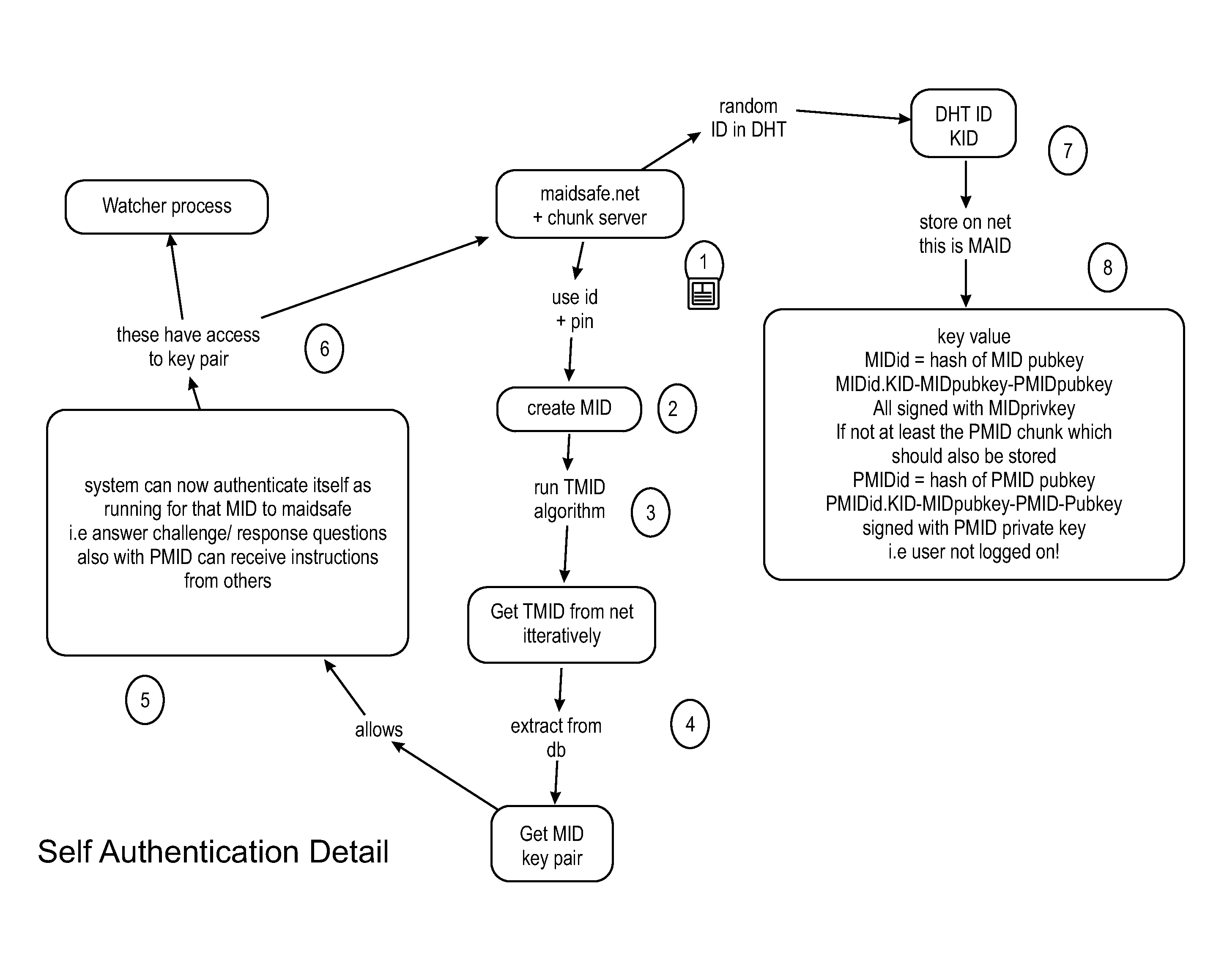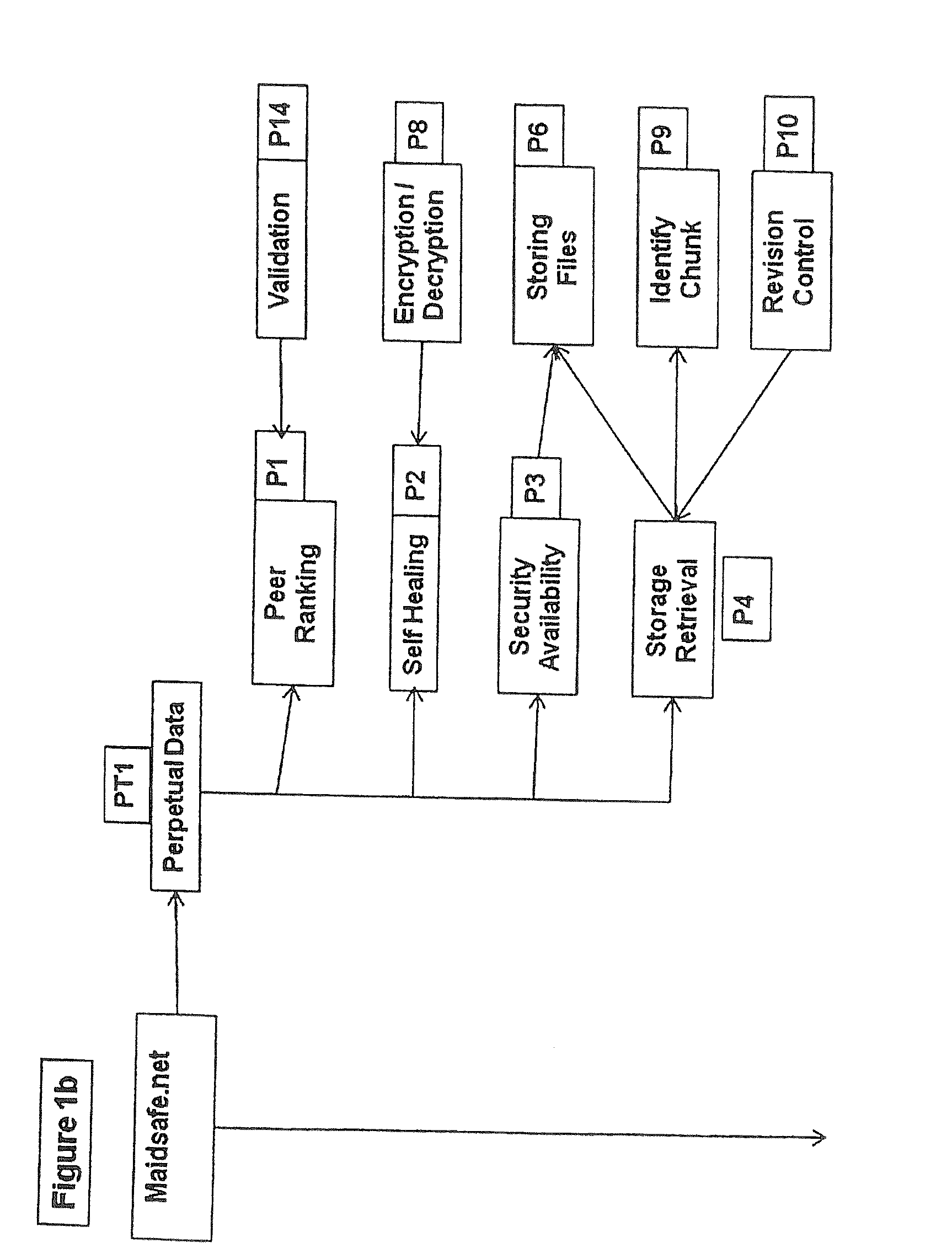An issue with today's networks is a combination of vendor lock in, imposed vendor based controls and lack of standards.
Also today, many
computer resources are under utilised to a great 1 degree, including
disk space, memory,
processing power and any other 2 attached resources, this is inefficient and environmentally detrimental.
Systems of messaging and voting exist today but do not allow either
authentication on what was voted for or on line
anonymity.
There have been some attempts as listed below, but none of these systems operate as maidsafe.net does.
All of these systems require a lost or (whether distributed or not)
record of authorised users and pass phrases or certificates and therefore do not represent prior art.
In this approach, the rerouting
algorithm and the establishing of alarm collection times become increasingly complex as the number of failed channels increases, and a substantial amount of time will be taken to collect alarm signals and to transfer rerouting information should a large number of channels of a multiplexed
transmission system fail.
One shortcoming of this multiple wave approach is that it takes a long
recovery time.
Document 3 also relates to fault
recovery for single transmission systems and has a
disadvantage in that
route-finding packets tend to form a loop and hence a
delay is likely to be encountered.
It also does not allow for multiple access and sharing of the testing and ownership of chunks.
This is not prior art for this present inventions but very likely not enforceable as there are many cases of prior art against this Microsoft patent.
(a) US2003053053625 discloser shows limitation of asymmetrical and symmetrical
encryption algorithms, and particularly not requiring generating a key
stream from symmetric keys, nor requiring any time synchronising, with minimal computational complexity and capable of operated at high speed.
Network firewalls are typically based on
packet filtering which is limited in principle, since the rules that judge which packets to accept or reject are based on subjective decisions.
Even VPNs (Virtual Private Networks) and other forms of data
encryption, including digital signatures, are not really safe because the information can be stolen before the
encryption process, as default programs are allowed to do whatever they like to other programs or to their data files or to critical files of the
operating system.
While the
storage area networks are generally more flexible and scalable in terms of providing
end user connectivity to different
server-storage environments, the systems are also more complex.
The systems require hardware, such as gateways, routers, switches, and are thus costly in terms of hardware and associated
software acquisition.
The Byzantine agreements require rather lengthy exchanges of messages and thus are inefficient and even impractical for use in a
system in which many modifications to files are anticipated.
The difference here is the requirement of a storage broker, making this not fully distributed.
Common email communications of sensitive information is in
plain text and is subject to being read by unauthorized code on the senders system, during transit and by unauthorized code on the
receiver'
s system.
(a) US2003053053625 discloses limitation of asymmetrical and symmetrical encryption algorithms, and particularly not requiring generation of a key
stream from symmetric keys, nor requiring any time
synchronizing, with minimal computational complexity and capable of operating at high speed. A serial
data stream to be securely transmitted is first demultiplexed into a plurality N of encryptor input
data stream. The input data slices are created which have a
cascade of stages, include mapping &
delay functions to generate output slices. These are transmitted though a
transmission channel. Decryptor applies inverse step of
cascade of stages, equalizing
delay function and mapping to generate output data slices. The output data streams are multiplexed. The encryptor and decryptor require no
synchronizing or timing and operate in simple
stream fashion. N:N mapping does not require expensive arithmetic and implemented in table lookup. This provides robust security and efficiency. A
significant difference between this approach and prior
cipher method is that the
session key is used to derive
processing parameters (tables and delays) of the encryptor and decryptor in advance of
data transmission. Instead of being used to generate a key stream at real-time rates.
Algorithm for generating parameters from a
session key is disclosed. This is a data communications network and not related to current invention.
(b) US2002184485 addresses
secure communication, by encryption of message (SSDO-self signing document objects), such that only known recipient in possession of a secret key can read the message and
verification of message, such that text and origin of message can be verified. Both capabilities are built into message that can be transmitted over internet and decrypted or verified by computer implementing a
document representation language that supports dynamic content e.g. any standard
web browser, such that elaborate procedures to ensure transmitting and receiving computers have same
software are no longer necessary. Encrypted message or one encoded for
verification can carry within itself all information needed to specify the
algorithm needed for decryption.
Each of these is a centrally controlled system and do not provide a mechanism to transfer credits or cash to anonymous accounts.
On the other hand, common transaction media such as
payment by personal check or
credit card represent a clear loss of
anonymity, since the purchaser's identity as well as other personal information is attached to the transaction (e. g., driver's
license number, address,
telephone number, and any information attached to the name,
credit card, or driver's
license number).
The use of cash, however, has limitations, especially in the context of electronic commerce.
There is some limited linkage between a few of the individual elements but none are inter-linked to provide comprehensive solution for secure data storage and
transmittance via internet utilisation.
 Login to View More
Login to View More  Login to View More
Login to View More 


